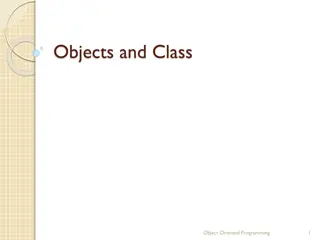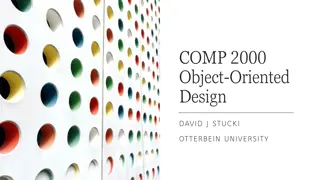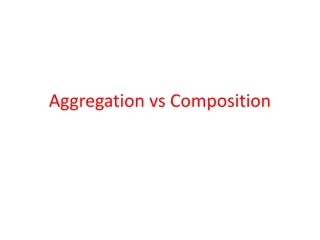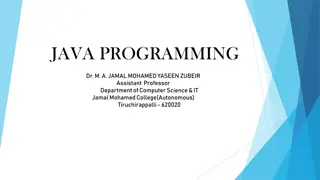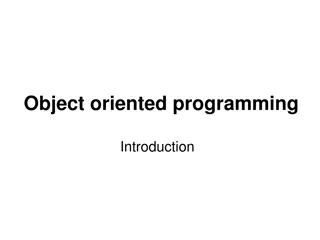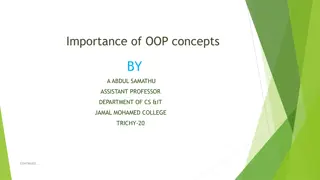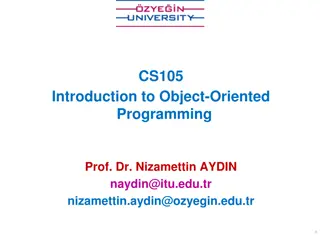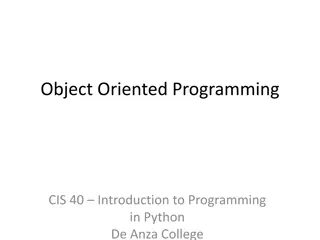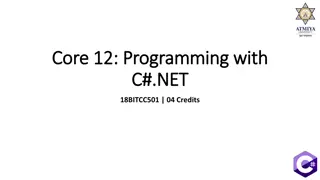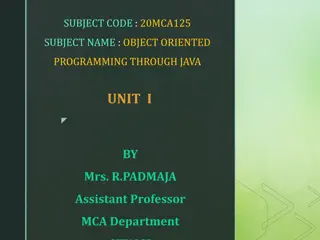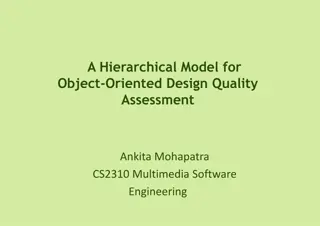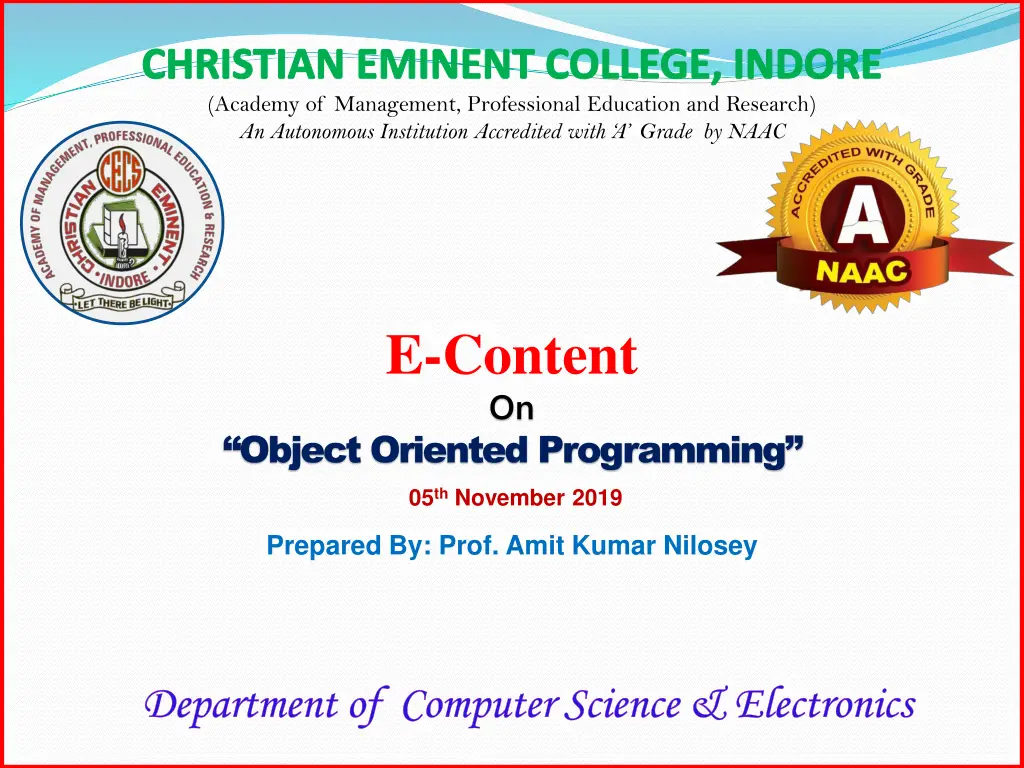
Understanding Object Oriented Programming vs. Procedure Oriented Programming
Dive into the differences between Object Oriented Programming (OOP) and Procedure Oriented Programming (POP). OOP focuses on data and objects, while POP emphasizes algorithms and functions. Explore the characteristics, features, and concepts of both programming paradigms to grasp their unique approaches.
Download Presentation

Please find below an Image/Link to download the presentation.
The content on the website is provided AS IS for your information and personal use only. It may not be sold, licensed, or shared on other websites without obtaining consent from the author. If you encounter any issues during the download, it is possible that the publisher has removed the file from their server.
You are allowed to download the files provided on this website for personal or commercial use, subject to the condition that they are used lawfully. All files are the property of their respective owners.
The content on the website is provided AS IS for your information and personal use only. It may not be sold, licensed, or shared on other websites without obtaining consent from the author.
E N D
Presentation Transcript
CHRISTIAN EMINENT COLLEGE, INDORE (Academy of Management, Professional Education and Research) An Autonomous Institution Accredited with A Grade by NAAC E-Content On Object Oriented Programming 05th November 2019 Prepared By: Prof. Amit Kumar Nilosey Department of Computer Science & Electronics
Procedure Oriented Programming Conventional programming using high level language such as COBOL, FORTRAN and C is commonly know as procedure oriented programming (POP). In the procedure oriented approach the problem is viewed as a sequence of things to be done such as reading, calculating, and printing. A number of function are written to accomplish this task . POP basically consists of writing a list of instructions for the computer to follow and organizing these instructions into groups know as function.
Characteristics of POP Emphasis is on algorithms 1. Large program are divided into smaller programs known as function. 2. Most of the function share global data. 3. Data move openly around the system from function to function. 4. Follow Top down approach 5.
Object Oriented Programming OOP treats data as a critical element in the program development and does not allow it to flow freely around the system . It ties data more closely to the function that operate on it , and protects it from accidental modification from outside functions. OOP allows decomposition of a problem into a number of entities called objects
Features of OOP Emphasis is on data rather than procedure 1. Programs are divided into what are know as objects. 2. Data is hidden and cannot be accessed by external functional 3. Objects may communicate with each other through functions 4. New data and functions can be easily added whenever necessary 5. Follows bottom up approach 6.
Class The building block of C++ and Java that leads to Object-Oriented programming is a Class. It is a user-defined data type, which holds its own data members and member functions, which can be accessed and used by creating an instance of that class. A class is like a blueprint for an object. For Example: Consider the Class of Cars. There may be many cars with different names and brand but all of them will share some common properties like all of them will have 4 wheels, Speed Limit, Mileage range etc. So here, Car is the class and wheels, speed limits, mileage are their properties. A Class is a user-defined data-type which has data members and member functions.
Objects Objects are the basic run time entities in an object oriented system. An Object is an identifiable entity with some characteristics and behaviour. An Object is an instance of a Class. When a class is defined, no memory is allocated but when it is instantiated (i.e. an object is created) memory is allocated. When a program is executed the objects interact by sending messages to one another.
Encapsulation Encapsulation is defined as wrapping up of data and information under a single unit. In Object-Oriented Programming, Encapsulation is defined as binding together the data and the functions that manipulate them.
Abstraction Data abstraction is one of the most essential and important features of object- oriented programming. Abstraction means displaying only essential information and hiding the details. Data abstraction refers to providing only essential information about the data to the outside world, hiding the background details or implementation. Consider a real-life example of a man driving a car. The man only knows that pressing the accelerators will increase the speed of the car or applying brakes will stop the car but he does not know about the inner mechanism of the car or the implementation of accelerator, brakes etc in the car
Polymorphism The word polymorphism means having many forms. In simple words, we can define polymorphism as the ability of a message to be displayed in more than one form. A person at the same time can have different characteristic. Like a man at the same time is a father, a husband, an employee. So the same person posses different behaviour in different situations. This is called polymorphism.
Inheritance The capability of a class to derive properties and characteristics from another class is called Inheritance. Inheritance is one of the most important features of Object-Oriented Programming. Derived Class: The class that inherits properties from another class is called Derived Class. Base Class: The class whose properties are inherited by derived class is called Base Class Reusability: Inheritance supports the concept of reusability , i.e. when we want to create a new class and there is already a class that includes some of the code that we want, we can derive our new class from the existing class. By doing this, we are reusing the fields and methods of the existing class.
Message Passing Objects communicate with one another by sending and receiving information to each other. A message for an object is a request for execution of a procedure and therefore will invoke a function in the receiving object that generates the desired results. Message passing involves specifying the name of the object, the name of the function and the information to be sent.

